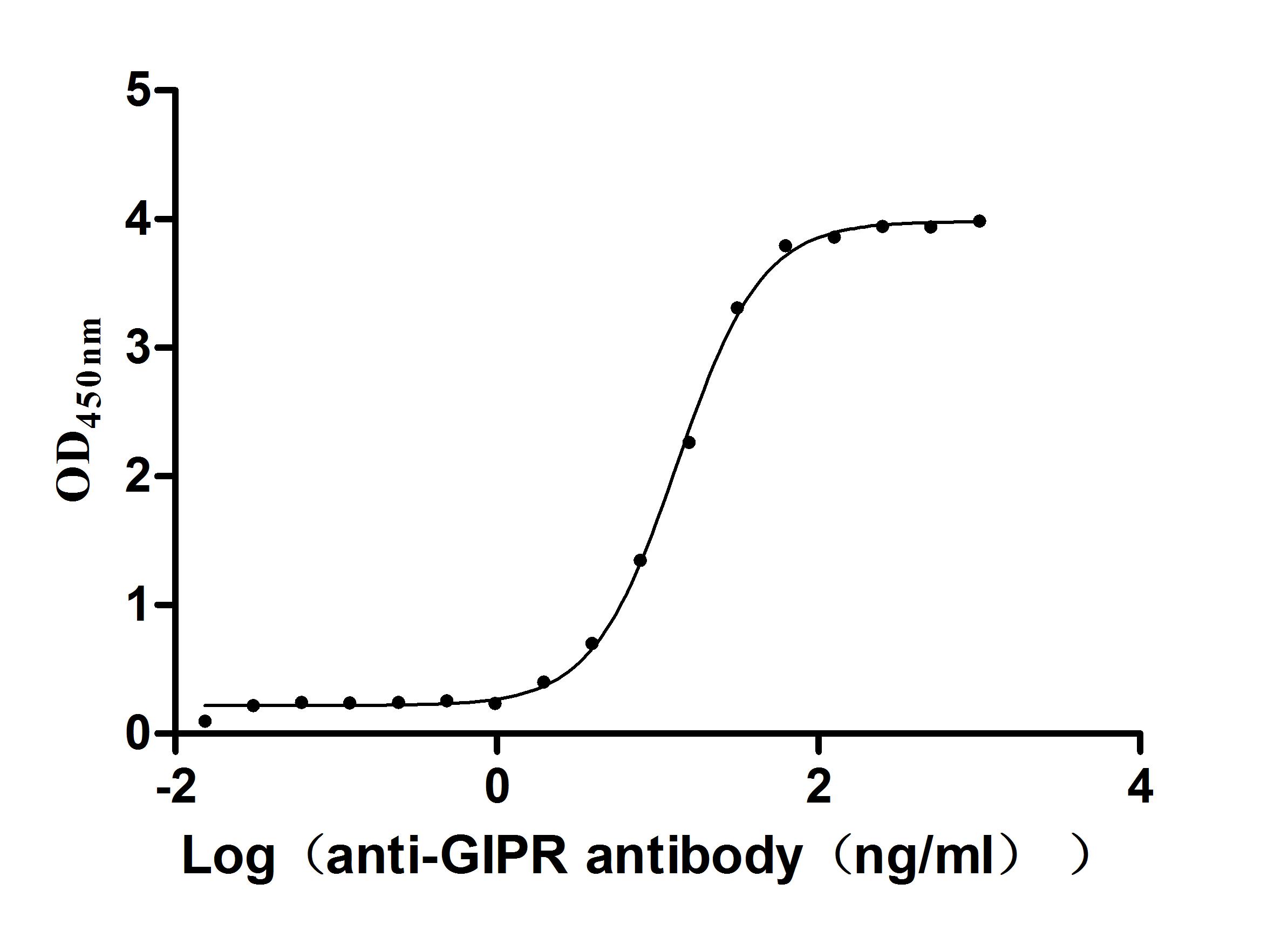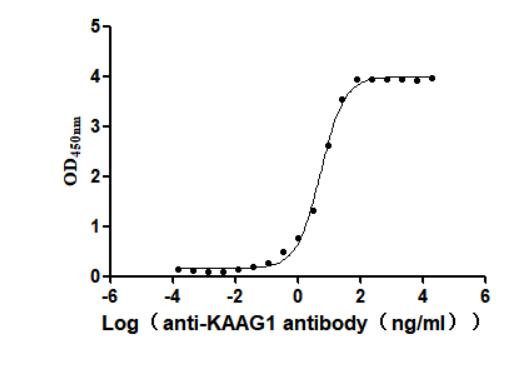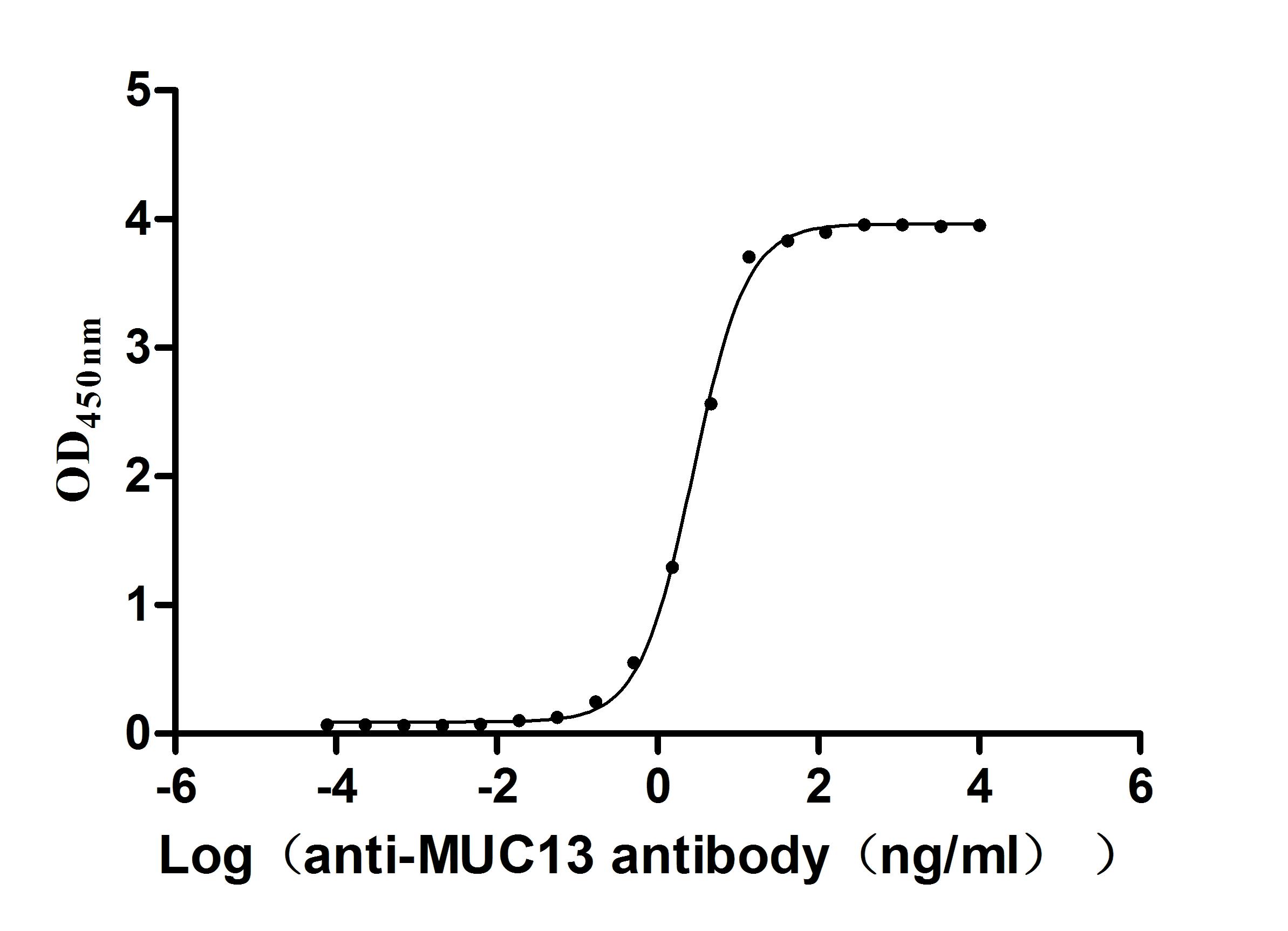Recombinant Mouse DNA polymerase beta (Polb)
-
货号:CSB-YP809109MO
-
规格:
-
来源:Yeast
-
其他:
-
货号:CSB-EP809109MO
-
规格:
-
来源:E.coli
-
其他:
-
货号:CSB-EP809109MO-B
-
规格:
-
来源:E.coli
-
共轭:Avi-tag Biotinylated
E. coli biotin ligase (BirA) is highly specific in covalently attaching biotin to the 15 amino acid AviTag peptide. This recombinant protein was biotinylated in vivo by AviTag-BirA technology, which method is BriA catalyzes amide linkage between the biotin and the specific lysine of the AviTag.
-
其他:
-
货号:CSB-BP809109MO
-
规格:
-
来源:Baculovirus
-
其他:
-
货号:CSB-MP809109MO
-
规格:
-
来源:Mammalian cell
-
其他:
产品详情
-
纯度:>85% (SDS-PAGE)
-
基因名:
-
Uniprot No.:
-
别名:PolbDNA polymerase beta; EC 2.7.7.7; EC 4.2.99.-
-
种属:Mus musculus (Mouse)
-
蛋白长度:full length protein
-
表达区域:1-335
-
氨基酸序列MSKRKAPQET LNGGITDMLV ELANFEKNVS QAIHKYNAYR KAASVIAKYP HKIKSGAEAK KLPGVGTKIA EKIDEFLATG KLRKLEKIRQ DDTSSSINFL TRVTGIGPSA ARKFVDEGIK TLEDLRKNED KLNHHQRIGL KYFEDFEKRI PREEMLQMQD IVLNEIKKVD SEYIATVCGS FRRGAESSGD MDVLLTHPNF TSESSKQPKL LHRVVEQLQK VHFITDTLSK GETKFMGVCQ LPSEKDGKEY PHRRIDIRLI PKDQYYCGVL YFTGSDIFNK NMRAHALEKG FTINEYTIRP LGVTGVAGEP LPVDSEQDIF DYIQWRYREP KDRSE
-
蛋白标签:Tag type will be determined during the manufacturing process.
The tag type will be determined during production process. If you have specified tag type, please tell us and we will develop the specified tag preferentially. -
产品提供形式:Lyophilized powder
Note: We will preferentially ship the format that we have in stock, however, if you have any special requirement for the format, please remark your requirement when placing the order, we will prepare according to your demand. -
复溶:We recommend that this vial be briefly centrifuged prior to opening to bring the contents to the bottom. Please reconstitute protein in deionized sterile water to a concentration of 0.1-1.0 mg/mL.We recommend to add 5-50% of glycerol (final concentration) and aliquot for long-term storage at -20℃/-80℃. Our default final concentration of glycerol is 50%. Customers could use it as reference.
-
储存条件:Store at -20°C/-80°C upon receipt, aliquoting is necessary for mutiple use. Avoid repeated freeze-thaw cycles.
-
保质期:The shelf life is related to many factors, storage state, buffer ingredients, storage temperature and the stability of the protein itself.
Generally, the shelf life of liquid form is 6 months at -20°C/-80°C. The shelf life of lyophilized form is 12 months at -20°C/-80°C. -
货期:Delivery time may differ from different purchasing way or location, please kindly consult your local distributors for specific delivery time.Note: All of our proteins are default shipped with normal blue ice packs, if you request to ship with dry ice, please communicate with us in advance and extra fees will be charged.
-
注意事项:Repeated freezing and thawing is not recommended. Store working aliquots at 4°C for up to one week.
-
Datasheet :Please contact us to get it.
靶点详情
-
功能:Repair polymerase that plays a key role in base-excision repair. Has 5'-deoxyribose-5-phosphate lyase (dRP lyase) activity that removes the 5' sugar phosphate and also acts as a DNA polymerase that adds one nucleotide to the 3' end of the arising single-nucleotide gap. Conducts 'gap-filling' DNA synthesis in a stepwise distributive fashion rather than in a processive fashion as for other DNA polymerases.
-
基因功能参考文献:
- Mitochondria from pol beta-deficient mouse fibroblasts had compromised DNA repair and showed elevated levels of superoxide radicals after hydrogen peroxide treatment. Mitochondria in pol beta-deficient fibroblasts displayed altered morphology by electron microscopy. PMID: 29100041
- pol beta contains a specific NLS sequence in the N-terminal lyase domain that promotes transport of the protein independent of its interaction partners. Active nuclear uptake allows development of a nuclear/cytosolic concentration gradient against a background of passive diffusion. PMID: 27956495
- Analyses of DNA damage and apoptosis revealed significantly greater degeneration of olfactory bulb neurons in transgenic Alzheimer's (3xTgAD)/Polbeta(+/-) mice compared to 3xTgAD mice. PMID: 27686631
- pol beta plays an important role in bypassing a 5',8-cyclo-dA during DNA replication and repair. PMID: 26123757
- we show here that heterozygosity for a Y265C mutation in Polbeta, a key polymerase in the BER pathway, is enough to significantly reduce both the number of expansions seen in paternal gametes and the extent of somatic expansion in some tissues PMID: 25886163
- The aberrant DNA replication mediated by the PCNA-DNA pol-b complex induces p53-dependent neuronal cell death PMID: 25184665
- Y265C POLB mutation leads to several pathologies associated with SLE and short CDR3 regions during VDJ recombination in B cells. PMID: 24388753
- Pol beta deficiency could enable ROS accumulation. PMID: 20510258
- Results show that deficiency of either DNA polymerases beta or lambda or both results in a modest but significant decrease in V region somatic hypermutation (SHM) with no effect on mutation specificity, suggesting no direct role in SHM. PMID: 24084171
- Overexpression of Pol beta could reduce oxidative damage and protect cells from hydroquinone genotoxicity. PMID: 21351627
- Polbeta could play a role in protecting cell lines from genotoxicity and genetic instability induced by benzo(a)pyrene. PMID: 22357513
- Polbeta could protect cells from apoptosis induced by hydroquinone through decrease of ROS level and depolarization of mitochondria. PMID: 22357534
- SAF-A interacts with BRG1 and both components are required for RNA Polymerase II Mediated Transcription PMID: 22162999
- data clearly demonstrate that the DNA polymerase activity of pol beta is essential for survival and genome stability PMID: 22493258
- Key residues for the rat DNA polymerase beta conformational transition was studied using elastic network model. PMID: 22070286
- Pol beta is critical for genome stability in the germline PMID: 21333614
- both pol lambda and pol beta interact with the upstream DNA glycosylases for repair of alkylated and oxidized DNA bases PMID: 20805875
- Folate deficiency provides protection against colon carcinogenesis in DNA polymerase beta haploinsufficient mice PMID: 20404327
- This was the first evidence of Pol beta recruitment in long patch base excision repair in vivo. PMID: 20006562
- Data provide the first link between oxaliplatin sensitivity and DNA repair involving Pol beta. PMID: 19838217
- Pol beta-deficient spermatocytes are defective in meiotic chromosome synapsis and undergo apoptosis during Prophase I. PMID: 20019666
- beta-pol has a role in DNA replication fidelity and/or base excision repair capacity and in lens epithelial cell differentiation PMID: 12713817
- polymerase beta was not involved in thermal radiosensitization PMID: 15195508
- proliferation and early differentiation of neuronal progenitors in Polbeta(-/-) p53(-/-) mice appeared normal, but their brains obviously displayed cytoarchitectural abnormalities PMID: 15485914
- Results suggest a genetic interaction between DNA polymerase beta and DNA-PKcs in embryogenesis and neurogenesis. PMID: 15647757
- DNA polymerase beta is not an essential component of the machinery that maintains mtDNA integrity. PMID: 16165404
- Expression of DNA polymerase {beta} cancer-associated variants in mouse cells results in cellular transformation. PMID: 16179390
- cell-free extracts incubated with Ape1-incised 2-deoxyribonolactone substrates under non-repair conditions give rise to DNA-protein cross-links, with a major species dependent on the presence of polbeta PMID: 16188889
- role for DNA polymerase beta in radiosensitivity in vivo PMID: 17126614
- Polbeta attempts to faithfully repair immunoglobulin switch region lesions but fails to repair them all. PMID: 17591858
- Normal POLB abundance is necessary for normal base excision repair activity, which is critical in maintaining a low germline mutant frequency. PMID: 18650495
- Data show that disruption of DNA polymerase beta and FEN1 coordination during long-patch base excision repair results in CAG repeat expansion. PMID: 19674974
- results highlight that Pol beta and poly(ADP-ribose) polymerase (PARP) function in the same repair pathway, but also suggest that there is repair independent of both Pol beta and PARP activities. PMID: 19748837
显示更多
收起更多
-
亚细胞定位:Nucleus. Cytoplasm.
-
蛋白家族:DNA polymerase type-X family
-
数据库链接:
KEGG: mmu:18970
STRING: 10090.ENSMUSP00000033938
UniGene: Mm.123211
Most popular with customers
-
Recombinant Macaca fascicularis Claudin (CLDN18)-VLPs (Active)
Express system: Mammalian cell
Species: Macaca fascicularis (Crab-eating macaque) (Cynomolgus monkey)
-
Recombinant Human Cytotoxic and regulatory T-cell molecule (CRTAM), partial (Active)
Express system: Mammalian cell
Species: Homo sapiens (Human)
-
Recombinant Human Serotransferrin(TF) (Active)
Express system: Mammalian cell
Species: Homo sapiens (Human)
-
Recombinant Human Myosin regulatory light chain 12A (MYL12A) (Active)
Express system: E.coli
Species: Homo sapiens (Human)
-
Recombinant Macaca Gastric inhibitory polypeptide receptor(GIPR), partial (Active)
Express system: yeast
Species: Macaca fascicularis (Crab-eating macaque) (Cynomolgus monkey)
-
Recombinant Human Kidney-associated antigen 1(KAAG1) (Active)
Express system: Baculovirus
Species: Homo sapiens (Human)
-
Recombinant Macaca fascicularis Zinc transporter ZIP6 isoform X1(SLC39A6),partial (Active)
Express system: Baculovirus
Species: Macaca fascicularis (Crab-eating macaque) (Cynomolgus monkey)
-
Recombinant Human Mucin-13(MUC13),partial (Active)
Express system: yeast
Species: Homo sapiens (Human)




















